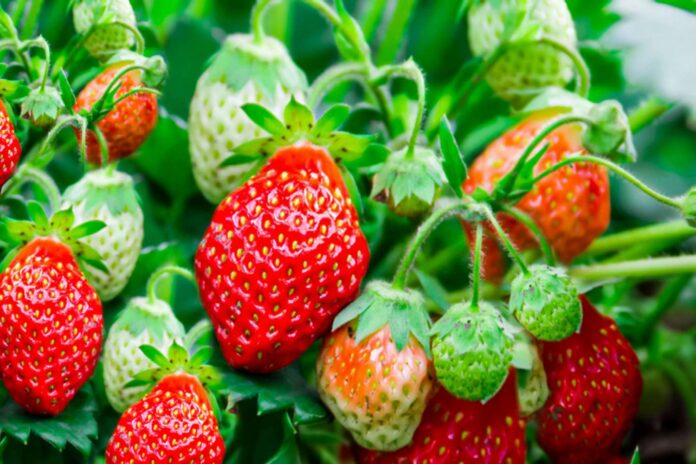Strawberries are a versatile delicacy that can be savored in numerous ways. You don’t have to wait for summer to enjoy a sweet, juicy red strawberry. The secret to relishing this tasty fruit year-round is by venturing into strawberry farming, albeit on a small scale. Here are a few tips for enjoying strawberries year-round:
Grow Strawberries in Your Garden or Indoors
Is it viable to grow strawberries in my garden or indoors all year round? Yes, it is doable with the right planting conditions and atmosphere. Growing strawberries indoors will save you lots of space, especially if you grow them in pots or containers.
It’s a more practical option for urban areas dwellers or those in small apartments. To guarantee success in your indoor strawberry farming venture, your plants must get enough water, sunlight, space, ventilation, and good soil.
Choose the Right Type of Strawberries
Growing the correct type of strawberries will give you a bountiful harvest all year round from the comfort of your home. Rather than fill up your garden space with the June-bearing (once a year) crop variety, opt for ever-bearing strawberry varieties that aren’t affected by seasons, such as Albion and Seascape.
These produce palatable medium to large fruits and they also thrive in containers if garden space is limited. You may also want to plant at least two different varieties for proper pollination and a steady supply of berries throughout the year.
Grow Your Strawberries Organically
The Environmental Working Group pinpoints 12 crop items, popularly known as the “Dirty Dozen” that are most likely to have pesticides. Strawberries are often on the list. Organic strawberries are grown without the use of synthetic pesticides or fertilizers.
This type of strawberry is smaller in size than its conventional counterpart, but no less delicious. It’s believed that organic strawberries taste better and are healthier.
Pick Your Planting Spot Carefully
Choose your planting site carefully. Strawberries are fickle plants and thus need adequate preparation before planting. If you don’t have ample space to plant your fruits, you can buy specially designed strawberry planting containers from online retailers or your nearest garden center. The containers provide a perfect environment for growing vigorous strawberry plants with sufficient space for growth and drainage.
The Soil Should Be Adequately Prepared
You should use soil that is loam, deep, sandy soil rich in organic material. You will also need well-drained potting soil mixed with well-decomposed manure or organic compost. This will provide the berries with enough nutrients for growth. Check that your plants have a sufficient amount of light from either a natural or artificial source.
Remove All Weeds Before and After Planting
Eliminate all weeds as they compete with the young berries for available nutrients and water. Weeds often harbor diseases and insects too. Remove unwanted plants from the planting site before planting and any other time weeds appear.
Water Appropriately and Use Mulch
Like all plants, strawberries will die out if they lack constant moisture. Ensure they are always moderately watered and use mulch. Mulching provides a protective covering between the fruits and the soil to prevent diseases and pest invasion. The covering also helps keep the fruit clean and moisture in the soil.
Fertilize Cautiously
Although strawberries need lots of nutrients to grow and produce well, overfeeding them with nitrogen fertilizers will only create rich foliage with no yield. When planting and sometimes during each month, use organic fertilizer containing ingredients such as guano, blood meal, worm castings, etc.
Handle Harvested Crop with Care and Store Properly
If you pick your berries and don’t want to eat them immediately, store them in the refrigerator. Only wash them if you’re eating them immediately since washing them makes them spoil sooner.
While it’s relatively easy to find strawberries in most seasons of the year, winter can be tricky but not impossible. You can use frozen strawberries in winter if you don’t grow them indoors. They are just as juicy and sweet.
Try Strawberry Farming In Your Garden and Enjoy All Year-RoundStrawberry farming in your garden or indoors requires the right growing tips and a good plan. You can then begin enjoying fresh and juicy strawberries all year long. Implement these tips in your localized strawberry farming and enjoy a bountiful harvest throughout the year.











